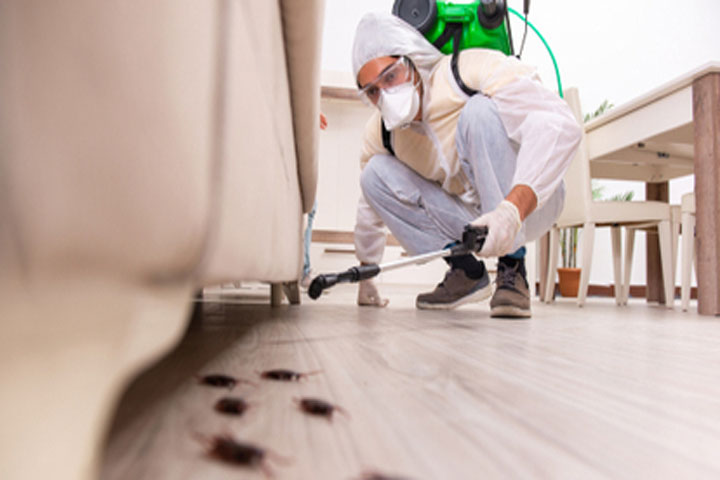Proven Bed Bug Heat Treatment: Eliminate Bed Bugs with Heat!
Wiki Article
Specialist Pest Control Techniques for Long-Term Results
In the realm of pest control, achieving continual efficacy and long-term outcomes calls for a meticulous technique that transcends plain elimination. Professional bug control methods encapsulate an extensive method that begins with a complete examination and evaluation, adhered to by accurate insect identification to recognize their behavior patterns. The application of Integrated Parasite Administration (IPM) concepts, coupled with eco-conscious therapies, creates the cornerstone of lasting bug removal. Nonetheless, real examination hinges on the recurring surveillance and upkeep of the dealt with locations, guaranteeing a pest-free setting for the direct future. By delving right into the intricacies of these strategies, a deeper understanding of specialist bug control methods for sustaining results arises.Examination and Evaluation
Upon getting in a building for insect control services, the preliminary action is a complete examination and assessment to determine the extent of the invasion and establish one of the most effective therapy plan. Expert parasite control service technicians are educated to meticulously analyze the facilities, looking for indications of parasite activity such as droppings, chomp marks, nests, or any structural damages. They will certainly also examine the conditions that may be drawing in insects, such as food sources, water leakages, or entry points.
Pest Recognition and Habits

Moreover, understanding the actions of the determined pest is vital to executing effective control actions. Knowing where pests nest, what they feed on, and their activity patterns can aid pest control experts design approaches to eradicate them efficiently. Some parasites might be nighttime, while others are much more active throughout the day. This expertise enables the application of therapies at optimal times for maximum performance.
Integrated Parasite Administration (IPM)
Integrated Parasite Management (IPM) strategies integrate multiple methods to regulate and avoid insect problems in bed bug treatment a sustainable and environmentally pleasant way. bed bug heat treatment. By incorporating methods such as biological control, habitat adjustment, adjustment of social techniques, and making use of immune varieties, IPM intends to minimize using chemical pesticidesOne of the essential principles of IPM is the focus on avoidance. This proactive method entails tracking insect populations on a regular basis to discover any potential problems prior to they intensify. By identifying parasite problems early on, pest control actions can be applied swiftly and properly.
Furthermore, IPM promotes the use of non-toxic insect control techniques whenever possible. This can include utilizing natural killers of the parasites, presenting useful bugs, or using pheromones to interfere with breeding patterns. By minimizing reliance on chemical pesticides, IPM not just secures the environment but additionally assists maintain an equilibrium in the community.
Environmentally-Friendly Therapies
Applying eco-conscious techniques in parasite control treatments can efficiently address infestations while focusing on environmental sustainability. Environmentally-friendly treatments concentrate on minimizing the impact of bug control techniques on environments, non-target microorganisms, and human wellness. These approaches typically involve the usage of natural predators, such as ladybugs or nematodes, to regulate pest populaces, decreasing the requirement for chemical treatments. Additionally, strategies like habitat control, such as adjusting dampness degrees or eliminating food sources, can aid discourage bugs without making use of dangerous compounds.One more trick facet of environmentally-friendly therapies is the usage of organic and biodegradable products that break down quickly without leaving unsafe deposits in the atmosphere. Organic insecticides stemmed from plants like chrysanthemums or neem supply reliable parasite control while posturing minimal danger to non-target species. Furthermore, using techniques like heat therapies or pheromone catches can target certain pests with accuracy, minimizing the overall ecological effect of parasite control techniques.
Ongoing Surveillance and Maintenance
Continual security and upkeep are crucial parts of efficient parasite control administration. Recurring monitoring plays an essential function in making certain that insect infestations are found very early and taken care of promptly. Routine inspections by skilled professionals are needed to recognize any indications of parasite task, evaluate the efficiency of previous therapies, and make modifications to the bug control strategy as needed. By checking insect populaces over time, insect control professionals can track fads, anticipate potential problems, and implement precautionary measures to reduce the threat of future problems.
Along with monitoring, upkeep techniques are important for long-term bug control success. This consists of carrying out proper hygiene steps to remove prospective food and water resources for bugs, sealing entrance points to protect against insects from getting in the facilities, and dealing with any kind of structural concerns that might facilitate insect problems (exterminator near me). By including ongoing monitoring and maintenance into an incorporated bug administration strategy, businesses can make certain a pest-free atmosphere and secure their residential property against expensive damage and health risks
Final Thought
In conclusion, utilizing professional parasite control strategies such as detailed examination and assessment, accurate bug recognition and understanding of their actions, integrated bug administration strategies, environmentally-friendly treatments, and continuous monitoring and upkeep are essential for achieving lasting lead to pest control. By implementing these methods, individuals can efficiently handle bug problems and preserve a pest-free environment in a sustainable way.Report this wiki page